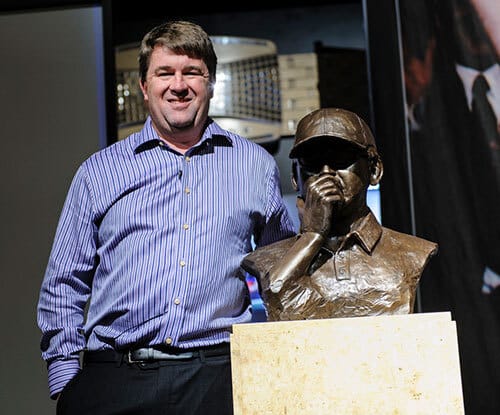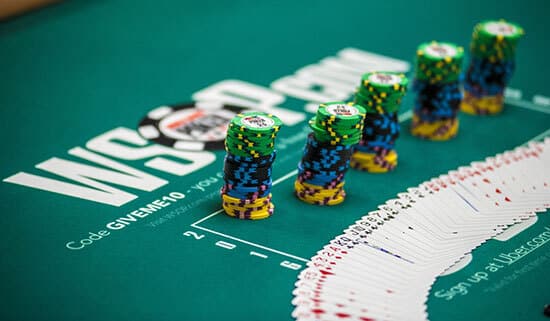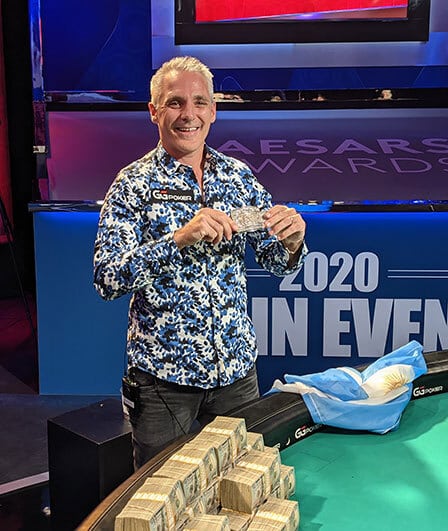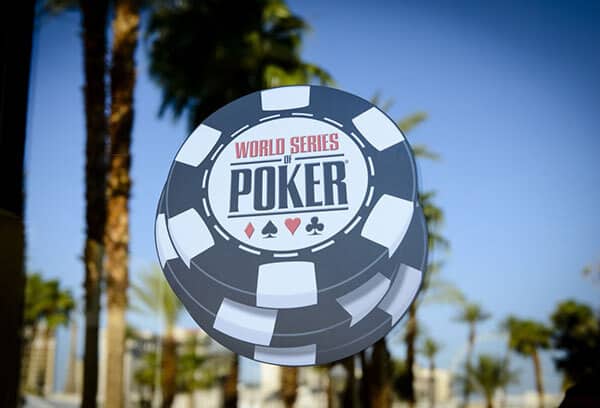The History of the World Series of Poker: 2004-2022 and Beyond

In the first part of this three-part series we looked at the formation of the World Series of Poker and had a look at the original legends and WSOP main event winners, such as Doyle Brunson and the Johnny’s, Chan and Moss. Part two had us remembering the growth of poker through the 90’s and an influx of international players. When we finished part two, Chris Moneymaker had just won the 2003 WSOP Main Event from an $80 online satellite on PokerStars. This had a direct effect on the poker world, to both live and online poker games. It became known as…
The Moneymaker Effect
When Chris Moneymaker, a completely unknown poker player from Knoxville, Tennessee, won the 2003 World Series of Poker’s Main Event, everything changed, the professional poker world was stunned. Until this point, amateur poker players around the world had been content to play home games with a few dabbling in the odd online tournament. Suddenly they were all determined to emulate the achievements of one specific former accountant turned poker legend. This one event changed WSOP history forever.
PLAY ONLINE POKER AT WSOP EVENTS
The year after Chris Moneymaker won the real WSOP poker championship Main Event, the World Series of Poker welcomed an unprecedented number of poker players to Las Vegas. In 2003, Moneymaker claimed victory over a field of 839 poker players, a massive jump from the 631 poker players in 2002, to win the $2.5 million top prize. The following year, 2004, Greg ‘Fossilman’ Raymer stood atop a record field of 2,576 total entries. His prize? An incredible $5 million and a WSOP bracelet, after a final table at this World Series of Poker Main Event featuring stars of the felt including Josh Arieh, Dan Harrington and runner-up David Williams, a former Magic: The Gathering player.
The following year, the World Series of Poker was on the move, with Binion’s now unable to play host to the thousands of poker players arriving in Las Vegas. An incredible 5,619 poker players paid $10,000 to take on the World Series of Poker Main Event. The 2005 WSOP had moved to the Rio Hotel & Casino, and the venue, used extensively for conference events during its tenure as WSOP hosts, was perfect. Joe Hachem became the first Australian poker player to win the Main Event, earning an amazing top prize of $7.5 million.

Going for Gold
The following year, it was the middle of a golden age for poker. With three years having passed since Chris Moneymaker’s legendary win, the poker boom was in full effect. Hachem’s win was trumped by the 2006 winner Jamie Gold, who won the biggest single Main Event prize in World Series of Poker history when he topped a record field of 8,773 players to claim the WSOP bracelet.
Gold’s win came with a degree of fortune. He used his big stack and got lucky throughout the final table but, after putting himself in a great position to win, his victory arguably went a long way to preserving the ‘Moneymaker Effect’ that had led to so many poker amateurs taking up the game.
Jerry Yang won in 2007 as the UIGEA (Unlawful Internet Gambling Enforcement Act) – which caused a major ripple effect in world of online poker, specifically in the U.S. – of the previous year took effect. This meant fewer online qualifiers, but the top prize won by Gold in 2006 and the poker boom kick-started by Moneymaker in 2003, saw the game resilient to change, a trend that would see it through the modern era.
Younger Than Ever
One unexpected change that occurred from the Moneymaker Effect was the age demographic was changing in poker, and that was never truer than between 2008 and 2009, when the youngest-ever player won the title of poker world champion… twice! In 2008, Peter Eastgate took the record from Phil Hellmuth, who had been just 24 when he won the world championship in 1989 when he denied Johnny Chan making it three-in-a-row. Eastgate was just 22 years old.
A year later, Joe Cada went and won the World Series of Poker championship at just 21, breaking the record Eastgate had held for less than 12 months. Taking down the final table that included the late, great Darvin Moon, Cada’s victory, spurred on by his supporting friend group, many of whom were also poker pros, set the template for many poker victories today. Young poker players took to the game more and more and, applying degree-level mathematical skills to the poker, propelled the game forward even from Hellmuth’s win into a new age.
When Jonathan Duhamel won the World Series of Poker title in 2010, his victory was the perfect display of big stack poker dominating the later stages. Relentless aggression matched with a little luck along the way – who can forget his era-defining elimination of Matt Affleck leaving him with a massive chip stack and only 14 players left? – showed that the era of the November Nine, where players were delayed playing the final table until November, was one to savor.

Jacobson and GTO
After the uber-attacking win of German poker player Pius Heinz in 2011, for $8.7 million, and follow-up victory by Greg Merson in 2012, for $8.5 million, poker saw one of its best-ever winners with the Swedish pro Martin Jacobson. Studying for the entire summer after reaching the World Series of Poker final nine, his dominance of the final table beginning with a moderate stack from middle position, was a lesson – if players wanted to win, they had a chance to get there through strategy, or at least put themselves in the best position.
Jacobson’s stunning win for $10 million, the second largest WSOP Main Event top prize, led to more and more players studying the game between the summer and November. In 2015, Joe McKeehen used a pre-final-table bust-out of popular Poker Hall of Famer Daniel Negreanu as a springboard to success, taking down the poker final in dominant fashion for $7.6 million.
In 2016, the world watched as Qui Nguyen powered his way to victory. The former immigrant turned American Dreamer sent money back to his native Vietnam in order to help those less fortunate than himself after winning just over $8 million. Scott Blumstein ($8.15m in 2017) and John Cynn ($8.8 million) emulated Nguyen in style as they also became poker world champions, with Blumstein crediting his poker coaches along the way.
Poker was no longer a solo sport, but more a team game, an elite mind sport where the hive-mind was all-important with strategy, physical training and mental stability playing ever larger parts in any one poker player’s success.
European Glory and a Pandemic
In 2019, the German poker pro Hossein Ensan won the same amount as former champion Martin Jacobson, banking $10 million, when he outlasted Italian Dario Sammartino in an all-European affair heads-up. It was to kick-start an era of European winners, but before the WSOP Main Event could get into that rhythm, the devastation of worldwide disease would change everything.
In late 2019, COVID-19 surfaced and while the effects weren’t fully felt Stateside until the Spring of 2020, that was enough to rule out a live poker Main Event. Instead, a ‘Hybrid’ Main Event took place, with poker players battling online down to a final table then playing it out in Las Vegas. That year was won by Damian Salas, but the numbers were understandably seriously affected. Just 1,379 players took part, the lowest ‘Main Event’ numbers since Moneymaker’s historic championship poker victory.

After a period where online poker more than sustained the poker economy, live poker was back in 2021. Play returned to the Rio for one last hurrah, a deal having been struck for the long-awaited move of the World Series of Poker back to the Las Vegas Strip. After 17 years, the Rio played host one last time for the most prestigious poker tournament series, with another German, Koray Aldemir, winning the top prize of $8 million as the field returned to a much more normal number with 6,650 entries.
Aldemir was another product of the ‘GTO’ era and won late in the year despite the November Nine having been scrapped a few years earlier.
A Brave New Future
In 2022, the World Series of Poker moved back to the Strip as Sin City welcomed the second-biggest Main Event turnout of all-time. In total, 8,663 poker players took on the biggest poker tournament in the world which was eventually won by Norwegian poker professional Espen Jørstad, who took home the $10 million top prize.
Taking place across two Strip-side sites, Bally’s – which would be renamed Horseshoe Las Vegas in the following year – and Paris casinos, the World Series of Poker Main Event was bigger and better than ever, with player feedback overwhelmingly positive about the battle for the world championship returning to its spiritual home on the Las Vegas Strip.
What does the future hold for the World Series of Poker? Over half a century on from its formation, only one thing is for certain – it will be exciting! With more players on the planet playing poker than ever before, poker has grown beyond belief when compared to those halcyon days of half a dozen men deciding the fate of the poker world championship without a card even being played!
